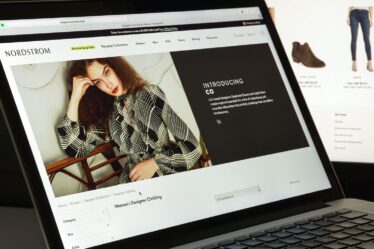
There is no surer sign of the times than a brand posting a slowdown in sales growth and watching its share price soar.
Warby Parker’s stock spiked more than 20 percent on Thursday following the release of its third quarter results, which showed sales growing by just 8 percent from a year earlier to $149 million. That represented a downshift for the eyewear brand – sales rose by 14 percent in the second quarter. But investors were more interested in the company’s losses, which narrowed to $24 million, from $91 million in the third quarter of 2021.
Direct-to-consumer brands are under intense pressure to show they can operate profitably, after a decade where they were rewarded for pursuing rapid growth at virtually any cost. Few have succeeded, and start-ups have seen their valuations slashed and share prices plunge amid doubts that they can continue to lose money as the economy slows and borrowing costs rise. Even after Thursday’s gains, Warby Parker shares are down by two-thirds in 2022.
Warby Parker’s response has been to cut back on marketing spending aimed at getting new customers to shop and, instead, focus ad dollars on convincing existing customers to spend more, including on eye exams in its growing number of stores.
“In a challenging economy with headwinds on [consumer] demand, we can still take market share and improve profitability,” Dave Gilboa, Warby Parker’s co-founder and co-CEO told BoF. “In this environment, that approach is even more well regarded by investors.”
The eyewear maker wasn’t the only digital pioneer looking to show it was on its way toward profitability this week.
On Tuesday, Allbirds reported revenue had grown 16 percent in the third quarter to $73 million, topping analysts’ expectations. But its losses nearly doubled, to $25 million from $14 million a year ago, prompting a 10 percent drop in the sneaker brand’s stock the following day.
Like Warby Parker, Allbirds is opening stores at a rapid pace in a bid to boost sales without relying so heavily on costly online ads. But with inflation concerns holding back consumer spending, in-store sales aren’t yet growing fast enough.
The company is trying other tactics to achieve profitable growth. In August, Allbirds said it would lay off 8 percent of its workforce. And it’s banking on wholesale partnerships with Zalando, Nordstrom, REI and others. Sales through those channels, mostly classic styles like its popular wool runners, contributed less than 10 percent of third-quarter revenue, but the company sees those third-party sales contributing more to the bottom line next year.
While Warby Parker received a more favourable reaction from Wall Street this week, the volatile moves in both companies’ stocks is another sign of the uncertain future for DTC brands.
“This is all new to the market and the industry. There isn’t a past example to point to,” said Tom Nikic, equity analyst at Wedbush Securities. “The playbook hasn’t been written yet.”



